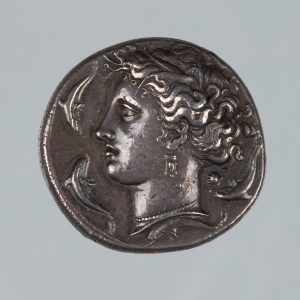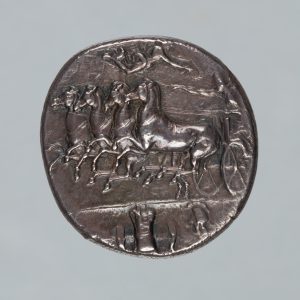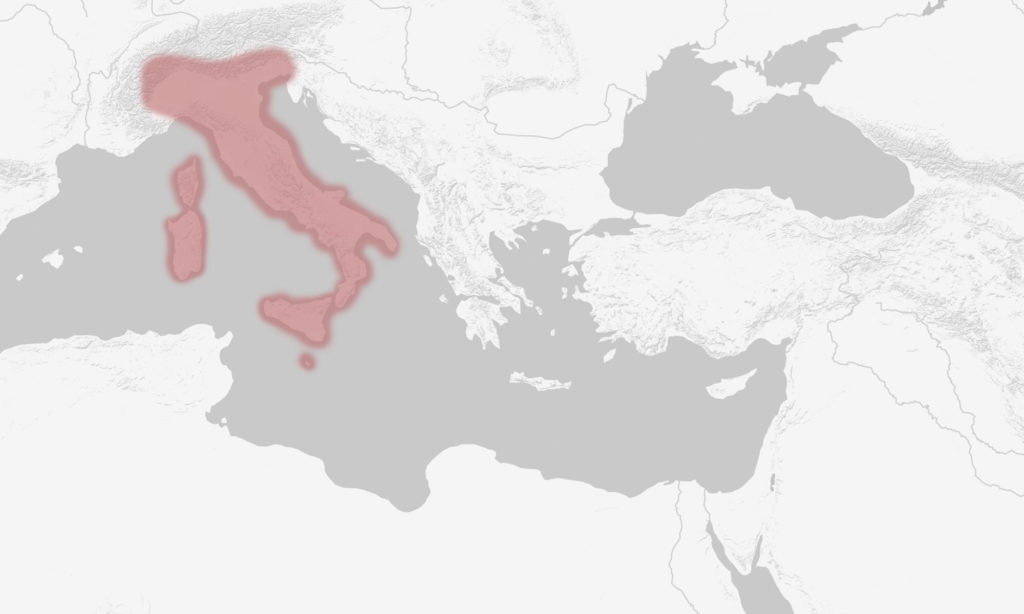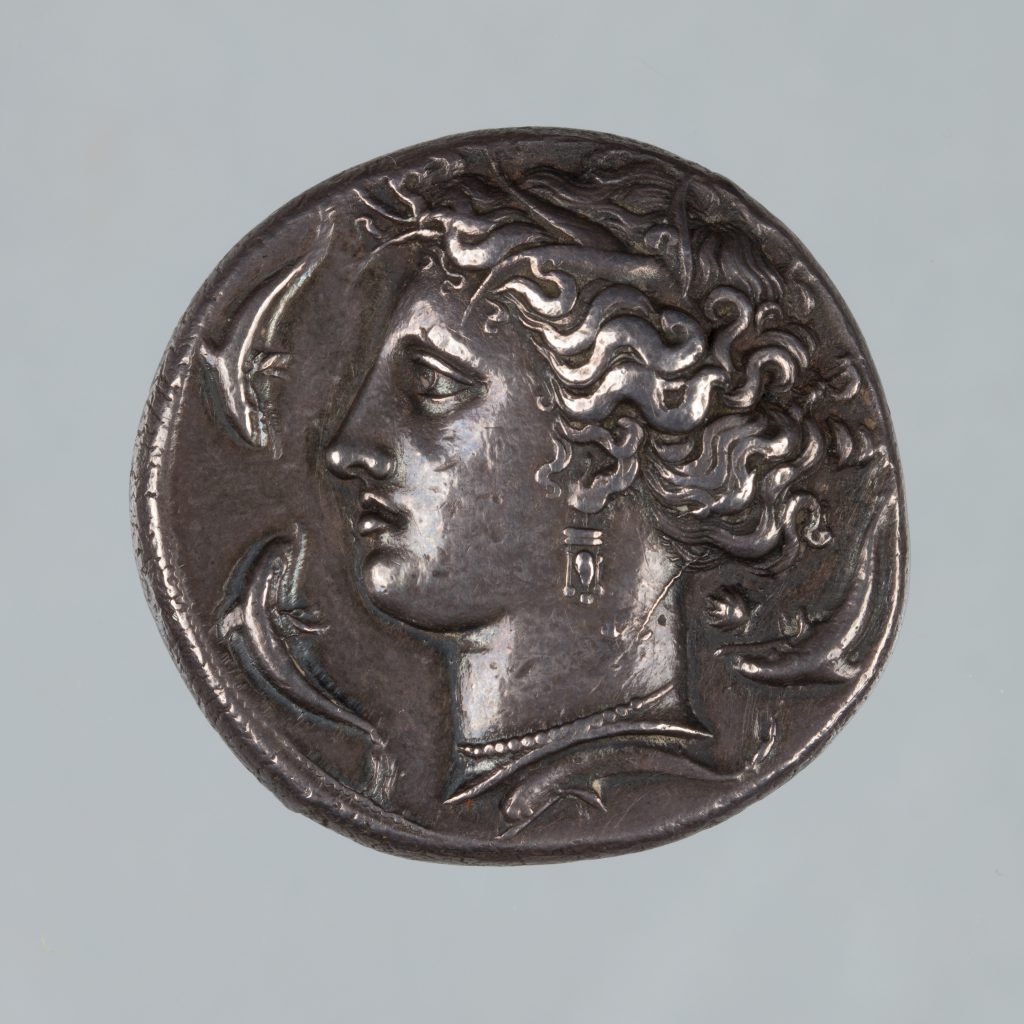
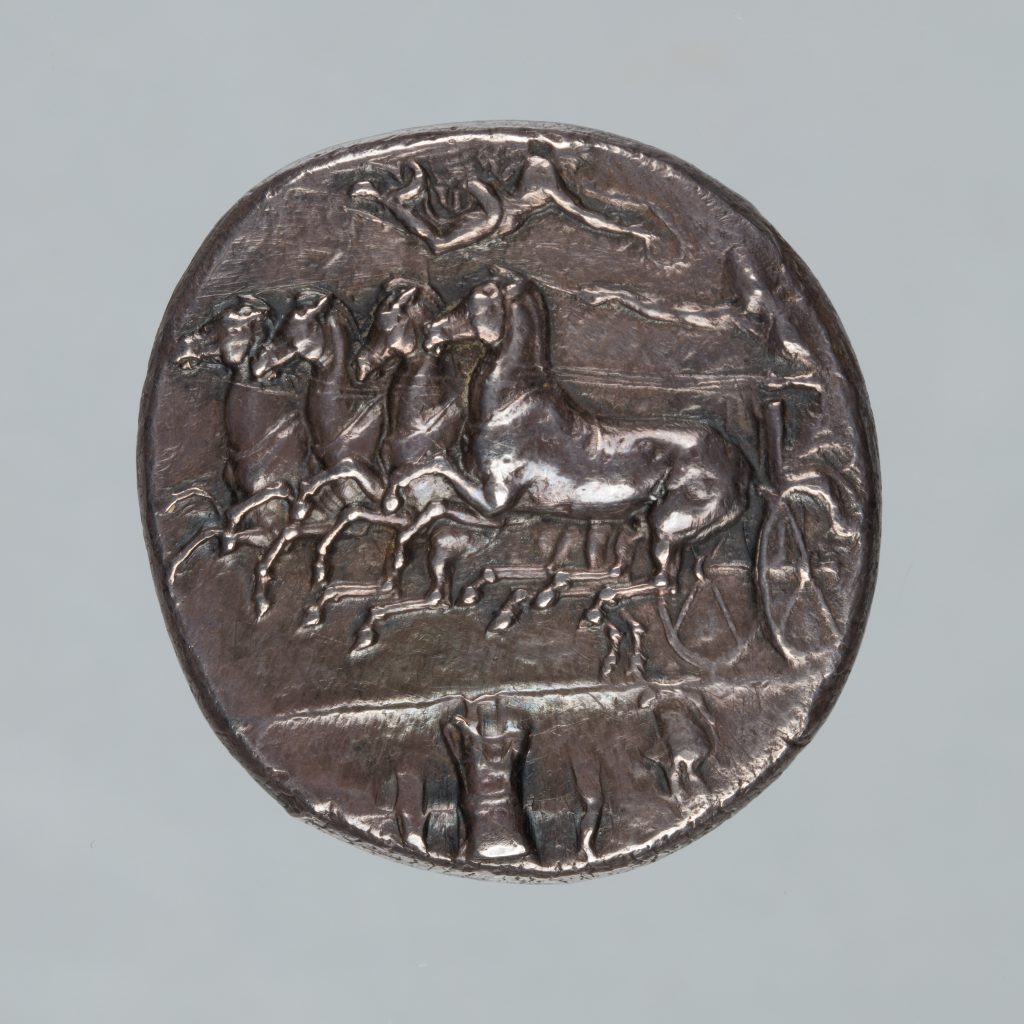
Gift of Edward Perry Warren, Esq., Honorary Degree 1926
1914.6.1This decadrachm of Syracuse is both a commemoration of an important Athenian militaristic defeat and a representative example of Greek artistic skill. The coin was likely minted in Syracuse between 412 and 405 BCE in conjunction with a series of athletic games held to celebrate the failed attempts by Athenian forces to capture Syracuse as part of their larger Sicilian Expedition. This triumphal spirit is reflected in the coin’s iconography, the reverse of which depicts a rider seated in a chariot pulled by four horses, the quadriga. Nike, the goddess of victory, swoops down to crown the rider with a laurel wreath. Edward Perry Warren donated over 130 coins, ultimately accounting for approximately one-quarter of his total gifts.
In the small space below the quadriga, the armor depicted—grieves (or shin-guards), a helmet, and a connected breastplate and backplate—draws a visual link to the Syracusan military feat that prompted the coin’s creation. The obverse depicts the profile of the sea nymph Arethusa framed by four dolphins. As the patron goddess of Sicily, she could be interpreted as a symbol of Syracusan pride given the context of the coin’s production.
Although the coin is not formally signed, it is believed to have been struck with dies designed by Euainetos, a renowned Greek engraver whose style has come to be easily identifiable. The delicacy of the lines—particularly the reins of the horses—and the execution of details such as the dimensionality and distinction between the pupil and iris of Arethusa’s eyes are just two examples of Euainetos’ prowess.
Before 1914, collection of Edward Perry Warren; 1914, gifted to the Bowdoin College Museum of Art by Edward Perry Warren.
Collector
A testament to his impact as an influential twentieth-century American antiquities collector, Edward Perry Warren’s (1860–1928, H ’26) name is linked to hundreds of ancient objects housed in institutions across the United States, including more than five hundred works at the Bowdoin College Museum of Art alone.
